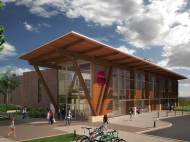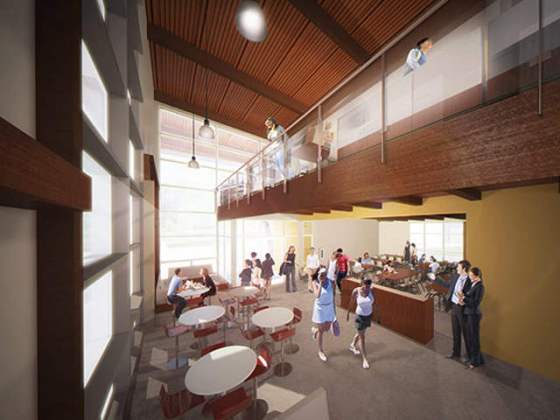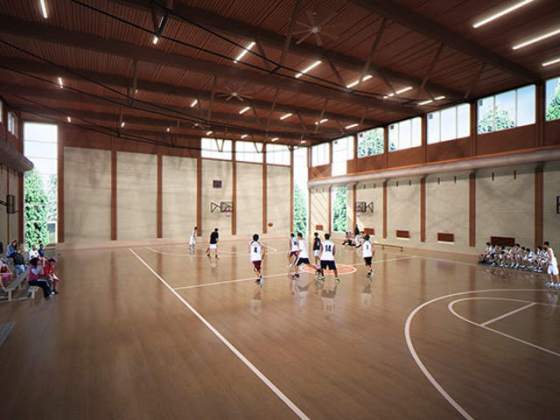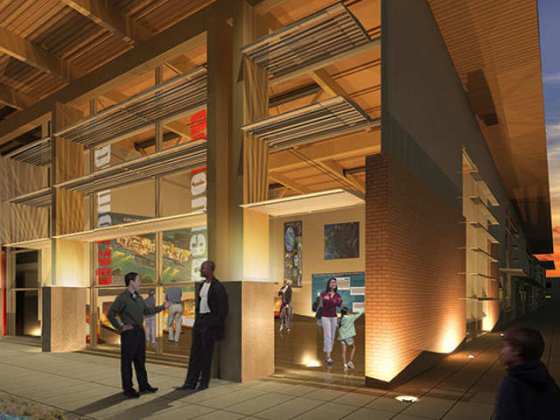Green architecture – Okanagan College Centre of Excellence
 The Okanagan College Centre of Excellence is being designed as an innovative, sustainable post-secondary facility that is highly adapted to its site, climate and context. Aside being example of green architecture, the Centre of Excellence features a syllabus with a focus on sustainable building technologies and processes, as well as research and development of alternative and renewable sources of energy.
The Okanagan College Centre of Excellence is being designed as an innovative, sustainable post-secondary facility that is highly adapted to its site, climate and context. Aside being example of green architecture, the Centre of Excellence features a syllabus with a focus on sustainable building technologies and processes, as well as research and development of alternative and renewable sources of energy.
Designed by CEI Architecture Planning Interiors, with support from an integrated project team, the Centre of Excellence has 7,085 square meters (76,262 square feet). It was designed to meet the ambitious targets of the Living Building Challenge, which requires net-zero energy and water consumption, as well as several other prerequisites. All of the building’s mechanical and electrical services are exposed, where possible, to demonstrate the technology used. This is part of the building’s teaching and “living lab” capability.
In order to perform better, the building had to be arranged in linear fashion along a north-south axis. To improve passive solar performance, and to define outdoor courtyard spaces, projecting wings were added to the west. The roof of the building is accessible to students, staff and visitors. It has green spaces with local flora and spaces with solar panels where students can conduct testing.
Energy is supplied by an array of photovoltaic panels which and is intended to be net zero on an annual basis. Extra energy generated in summer will be used to supply other campus buildings. The PV panels are stand-alone as the client wanted the future flexibility offered by a ‘plug and play’ system.
Walls of the gymnasium use new technology, designed by the project’s structural engineers Fast + Epp and built by StructureCraft Inc. of Delta. The walls are built with composite panels, a combination of concrete and glulam (glued laminated timber) beams that are light and strong. These walls have heating and cooling piping inside with electrical conduits and built-in ventilation. The floors on the first and second floor of the building (excluding the gymnasium) are made of polished concrete with radiant heating.
An open loop continuous system uses the water source (located more than 60 meters below the building where wells have been drilled) for the radiant heating. The water is drawn to the surface where heat is taken out of the water via heat pump technology. The building is naturally ventilated because windows open at specific temperatures. Air will enter the building and pass over the cool concrete slab floor. Five solar chimneys draw warm air up and out of the building.
The project proposes to recycle and re-use all wastewater produced on site using treatment by the City of Penticton. Penticton’s municipal water treatment system was recently converted to a chemical-free LBC-compliant process. Treated water will be returned to the site for use in the building’s grey water system and for on-site irrigation. Domestic hot water loads will be generated by solar panels.
The building is being built with 100% BC wood, including a combination of pine beetle-kill wood and FSC certified lumber sourced from the Kootenays. It doesn’t feature materials which are red-listed by the Living Building Challenge (other than those required by building codes) and it doesn’t use any products that are harmful to people or the environment (I.e., no formaldehyde in insulation).












Leave your response!